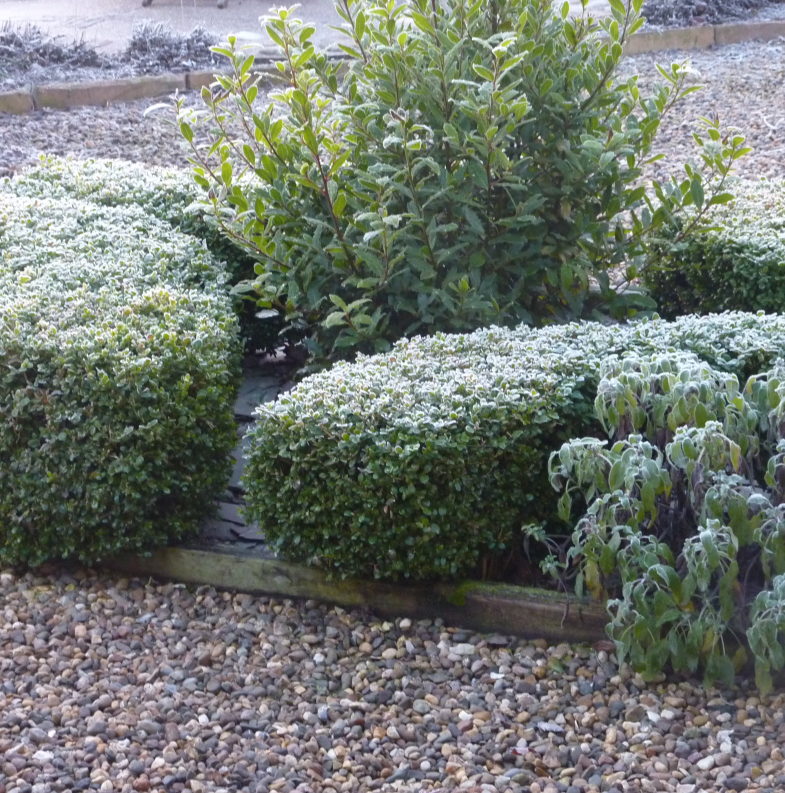
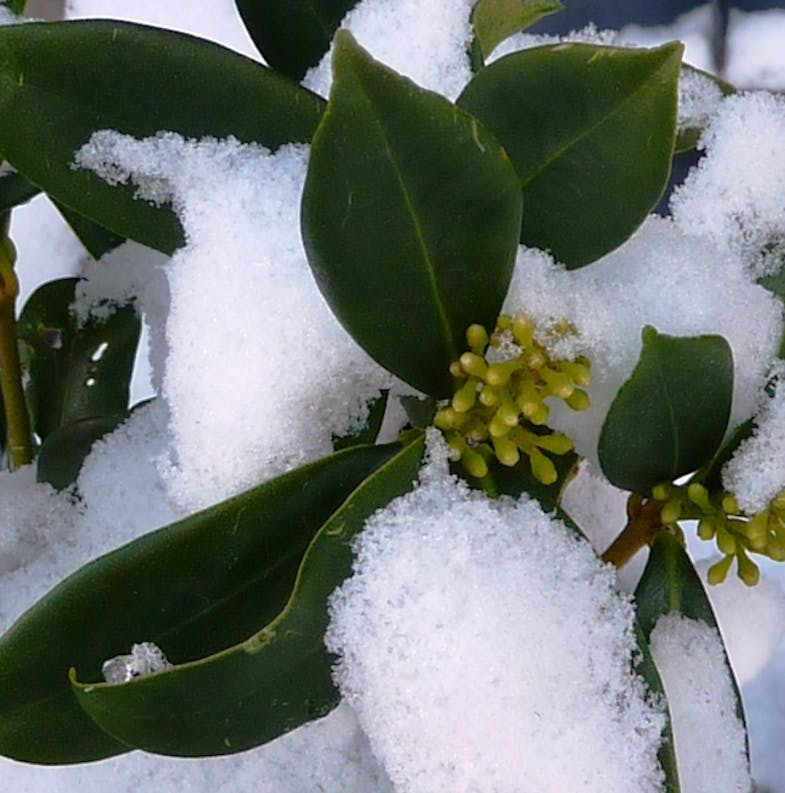

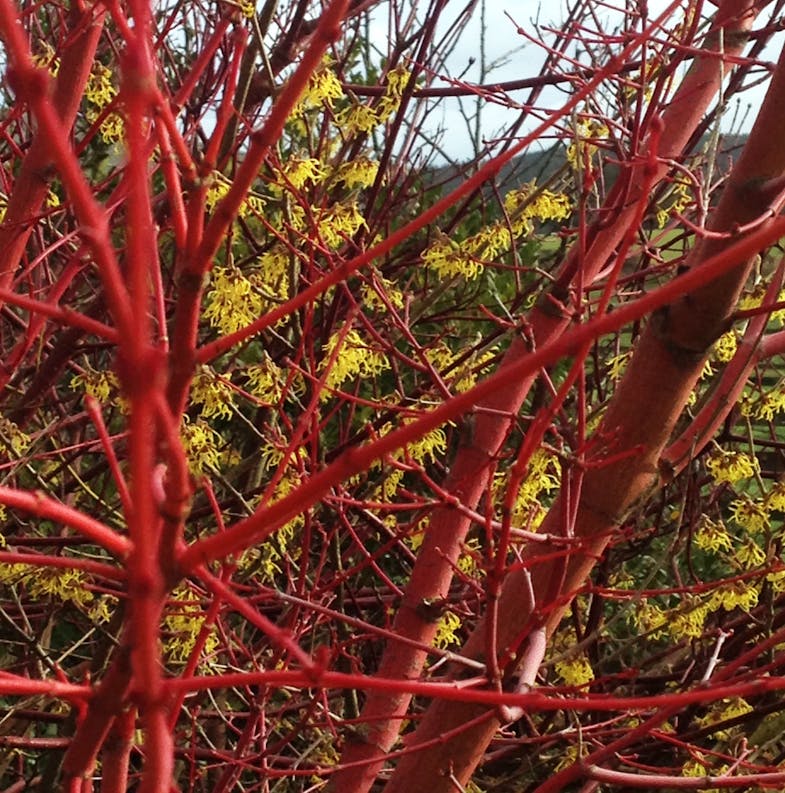
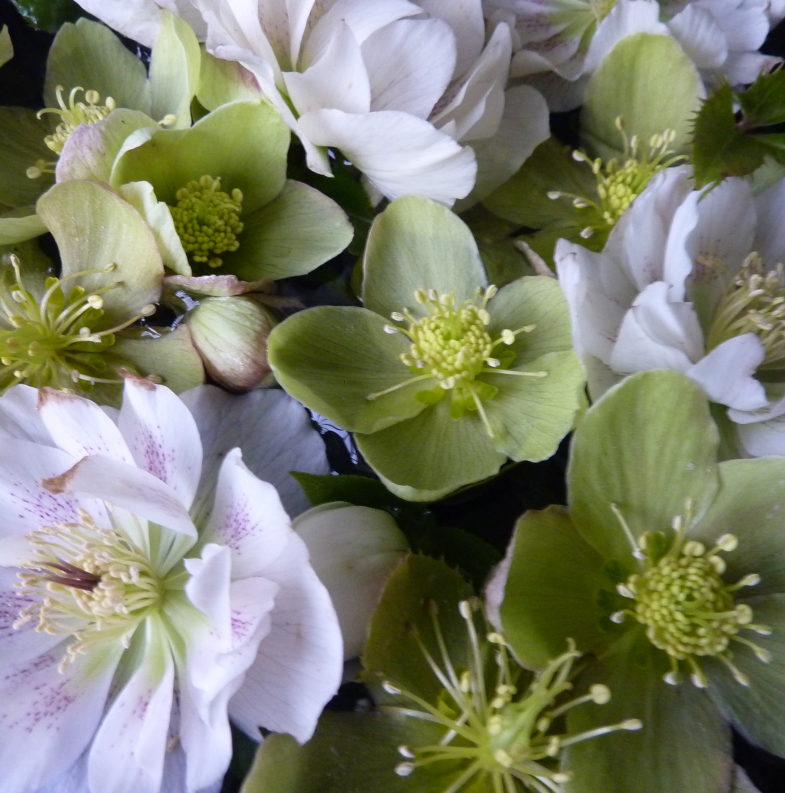

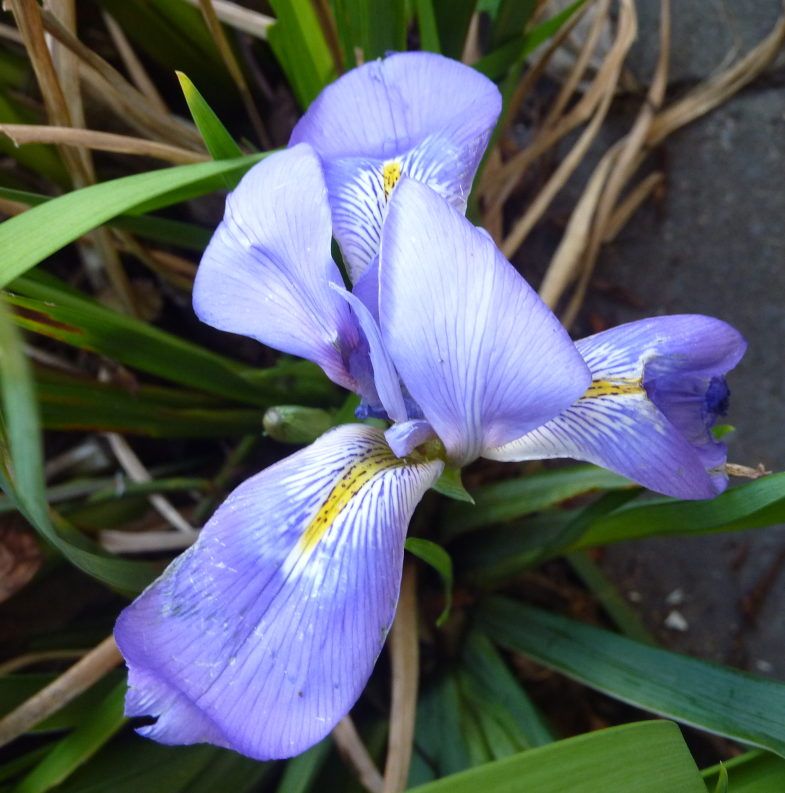
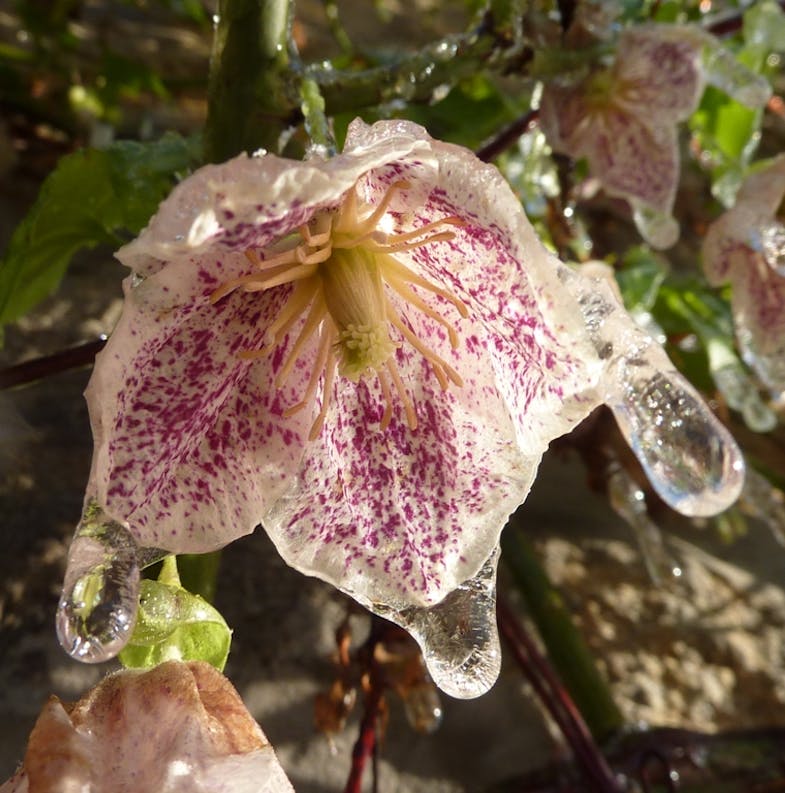

clipped evergreen topiary
Box, Buxus sempervirens (which translated from Latin means evergreen) creates structure in a winter garden, which is so necessary to define the space, and neatly clipped topiary comes into its own on frosty days. If box blight or box tree moth is becoming a problem there are alternative evergreens that suit clipping such Ilex crenata or Hebe pinguifolia.
Skimmia 'Kew Green'
Skimmias serve a dual purpose, they are as useful in the border as they are cut for decorating Xmas wreaths. Certain plants, like us, are either male or female, and Skimmia and holly are 2 well known examples; the male plants bears showy flowers whilst the female plants bear the berries (vessels containing the seeds) so if you want berries you need to plant both female and male varieties in your garden.
Grasses
Grasses have a structure for 9 months of the year and the lowest maintenance plants in my garden. This grass is a type of Giant Oat, Stipa ‘Gold Fontaene‘
Knoll Gardens have a great website and gallery of images if you fancy some garden planning over Christmas https://www.knollgardens.co.uk/product/stipa-gold-fontaene/
Witchhazel fireworks & colourful Cornus stems
Hamamelis Arnold Promise’ provides bright yellow firework flowers in late January, with the added bonus that they are citrus scented, reminding me that it’s time to buy Seville Oranges & make marmalade! These are expensive investment plants, eventually reaching 3m x 3m so think carefully where you’ll best see them from the house in winter.
Cornus alba provide beautifully coloured stems in winter. It is the youngest stems that are the brightest coloured so prune to keep new. fresh growth. Join us on our 1/2 day Pruning Course if you’re in any doubt how to do so.
https://www.linnelsfarm.com/product/pruning-masterclass/
Hellebores
Helleborus orientalis hybrids and Helleborus angustifolius flower from late January in the most sheltered gardens. They love being planted under deciduous trees, we used to have a fabulous display under greengage trees at the last house. Cut off all the old foliage in January to allow the new flowers to look their best. Beware of Helleborus black spot on the leaves of affected plants, and if seen disinfect secateurs between cutting each different plant so as not to spread it through the whole patch.
Flowers can be floated in bowls easily, or you’ll have to sear the stems in boiling water if you want them to stand in a vase. Once the seedheads have formed the flowers no longer require searing.
Iris reticulata
Like Persian Jewels it’s hard to believe these hardy little bulbs will flower in February outside in Northumberland!
Iris unguicularis
A truly ugly name for a truly beautiful flower! The Algerian Iris produce diminutive flowers from January-March, as long as they are planted with some shelter e.g right next to the house wall. They have slightly ugly, floppy leaves so best not planted right by the front door but somewhere you can easily spot the buds and pop out to pick the 10cm stems to open up in a vase for a day. The flowers are the perfect ‘shirt blue’.
Clematis cirrhosa 'Freckles'
This cutie needs to be viewed from below so you can see upwards into her freckly face. She needs to be planted on a West wall in a sheltered location since she flowers in January onwards; hence in our more inclement weather.
Plant deeply, to reduce the likelihood of clematis wilt, and remember the adage for clematis – ‘roots in the shade and faces in the sun’ so an old clay pipe over the lower stems or a slate tile covering the roots makes for a happy plant.
Scilla mischtschenkoana
What a mouthful of a name! All you need to know is that these little bulbs flower from November to March when you need beauty most. Plant in small containers protecting the young foliage from slugs and it will delight you for years to come.
photo: Sabina Ruber
